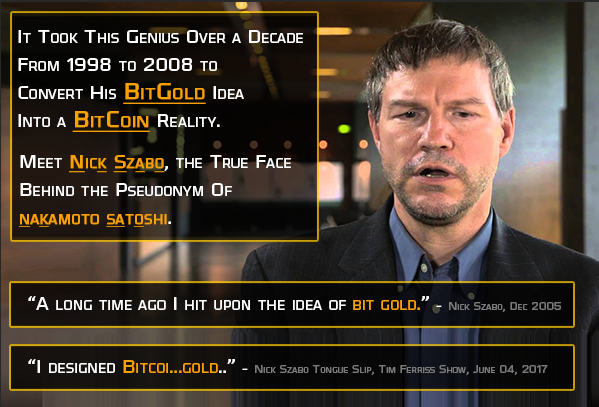
Hey there!
In my last post, I explored some types of digital currencies that have been widely adopted especially those associated with video games. These currencies are so trusted and accepted that they are traded publicly not only in-game but also on trading sites like E-bay. As a matter of fact, some of these gaming currencies are even worth more in value per unit than some nations’ currencies.
We also discussed the general primary weakness associated with these kinds of digital currencies which makes them similar to fiat. This is the fact that they require one central authority. Whether it is a government that you can’t trust or collapses, a bank that fails, or a game developer in the case of gaming digital currencies.
With these kinds of currencies, there is a single point of failure.
Now, what if the ledger of transactions for these currencies was taken from one single point and distributed all over the world? This is how the idea of decentralization came up.

Source: Pixabay | Photographer: nattanan23
Now in the case of bitcoin, the public copies of transactions are taken and spread across 10,000+ different computers all across the world along with a lot of other things needed to keep the chain in sync (that is what the meat of this course is about). This way, there was no reliance on one central authority, instead, it is all spread out. Bitcoin wasn’t the first to do this, but it built upon previous innovations that are not really popular which I will be exploring in this post.
But firstly, for a digital currency to be truly decentralized, it must possess certain features.
It must be fully resistant to counterfeiting. Imagine if you could figure out a way to create new bitcoin, sit in your room and code some bitcoin. It will pretty soon begin to lose value and becomes worthless.
It must have a controlled supply. Like every other type of currency, decentralized digital currencies must have controlled supply to maintain the mechanics of demand and in turn maintain its price.
It must be secure. This cannot be overemphasized. One, including the creator, shouldn’t be able to create a transaction from User A to User B without User A’s permission. This would defeat the whole aim of security.
Early Attempts at Decentralized Digital Money
1. b-money
In 1998, Wei Dai created b-money. You may be surprised at how far back this goes considering Bitcoin appeared in the year 2008. b-money appeared 10 years before bitcoin but it never took off because it was just a prototype, a proof of concept and a demonstration of the core ideas of decentralization. It was basically a fragile version of bitcoin.
According to Investopedia,
One of these early proposed cryptocurrencies was called B-money. First revealed in 1998 by computer scientist Wei Dai, B-money aimed at being an "anonymous, distributed electronic cash system." In this way, it endeavoured to provide many of the same services and features that contemporary cryptocurrencies today do as well.
Part of what made bitcoin successful is its very robust software. It runs without much maintenance. Wei Dai found a way to create digital scarcity with b-money using cryptography and implemented it.

Source | Author: Cypherpunk / Bitcoin
2. Bitgold
This was written by Nick Szabo in 2005. He came up with a way to distribute transaction ledgers across many machines in a network.
He also used cryptography to make it impossible to tamper with the ledgers, impossible to edit the history.
According to Investopedia,
Bit gold is a 2005 proposal by Nick Szabo for a financial system that combines different elements of cryptography and mining to accomplish decentralization. These elements include timestamped blocks that are stored in a title registry and are generated using "proof of work" strings. In his post announcing bit gold, Szabo proposed a decentralized proof of work function that could be "securely stored, transferred, and assayed with minimal trust."
3. Reusable Proof Of Work (RPOW)
This was written by Hal Finney in 2004.
According to Investopedia, Proof Of Work is
a system that requires a not-insignificant but feasible amount of effort in order to deter frivolous or malicious uses of computing power, such as sending spam emails or launching denial of service attacks.
Interesting fact - there is a theory that says that Hal Finney was actually the first person to receive bitcoin from the creator of Bitcoin Satoshi Nakamoto in 2009.
There is also a conspiracy theory stating that Hal Finney was in fact the creator of bitcoin and is Satoshi Nakamoto.

Conspiracy theories about the identity of Satoshi Nakamoto
I don't really care if these conspiracy theories are true and I've honestly never spent more than a minute thinking about who Satoshi really could be.
Now, Reusable Proof Of Work was an iteration on b-money. Hal Finney figured out a good way to create a stable supply of digital currency using cryptography.
With this, there was artificial scarcity because you couldn’t just copy and paste a copy of a digital currency elsewhere.
With this, you can see that bitcoin wasn’t just some experiment that succeeded. It was built on the concept that some of these earlier projects provided to become successful. This was almost 10 years after the first attempt was made by Wei Dai to create b-money.
Tell me what you think in the comments, especially about Nick Szabo being Satoshi Nakamoto. I love some good conspiracy theory discourse.

Check out my other recent finance posts:
Check out my other non-finance posts:
Visiting the Largest Water Park In West Africa: I Became a Child for a Day - Part 1
[ENG/ESP] Short Story: The Ghost of the Past | Relato Corto: El Fantasma del Pasado

Written by @gamsam
All images used are taken by me and copyright free


Posted Using LeoFinance Beta